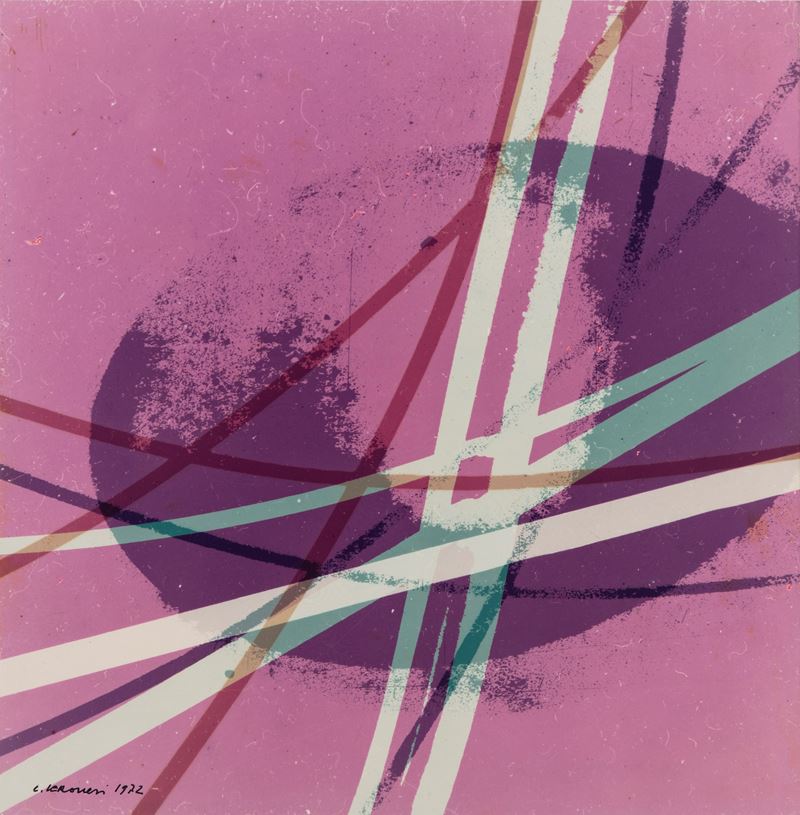Estimate
€ 1.500 - 2.500
Sold
€ 2.064
The price includes buyer's premium
Do you have a similar item you would like to sell?
Information
cm 24 x 23,5 | 9.4 x 9.2 in.
Signed and dated in black ink on the image and signed, titled and dated in black ink on the verso
Framed
Luigi Veronesi (Milan 1908 - 1998) investigated in the most different fields with a style inspired by the Bauhaus lesson. In painting, he was an important exponent of Abstractionism (he signed its first Italian Manifesto and joined the Parisian group Abstraction-Création) and, from 1949, of MAC Art. Since the 1920s, he worked as a textile designer (often in Paris where he was a proud anti-fascist) and as a graphic designer for magazines such as Poligono, Campo Grafico, Casabella and Ferrania. Research also saw him as a protagonist in the field of photography: like Man Ray and Moholy-Nagy, he developed the photogram technique; in 1947 he signed the ‘Manifesto della Bussola’ in Milan and in 1950 he joined the Unione Fotografica. His interventions in the theatre field and the research he carried out with Malipiero on visual music are excellent.
In Luigi Veronesi's photography the elements of his job as a bold and visionary graphic designer are mixed in an explicit way. In La ballerina all this is very evident: it was made in 1950 when in the past three years the great adventure of “Ferrania” has started, the magazine of which he is a graphic designer, and which is conceptually close to the photographic group La Bussola of which he is a member. The skill with which he proposes the collage of the figure in silhouette in different shades, sizes and orientations gives this image a lightness and gracefulness underlined by the lines crossing the background obtained with a pseudosolarization intervention of which Veronesi is a master. The 1972 Fotogramma is a fine example of his use of color but also of his search for geometric elements that allow him to achieve abstract-like results using relatively simple tools (he used a simple, cheap Russian Zenit SLR with Helios lens and operated in his painter's studio) but with extraordinary creativity.
Contact
Suggested lots
Caricamento lotti suggeriti...






